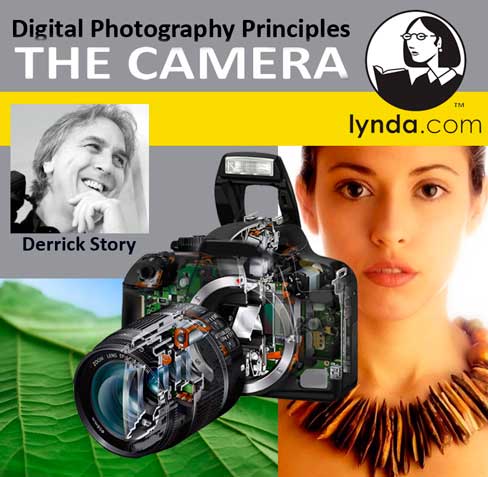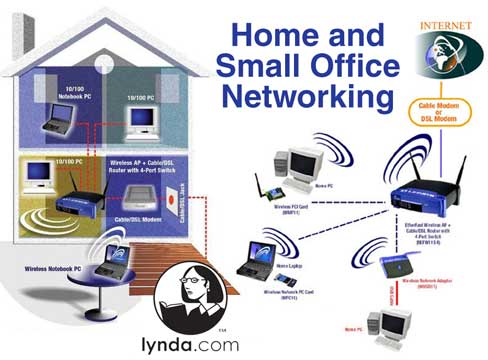You can recover MySQL database server password with following five easy steps.
Step # 1: Stop the MySQL server process.
Step # 2: Start the MySQL (mysqld) server/daemon process with the --skip-grant-tables option so that it will not prompt for password.
Step # 3: Connect to mysql server as the root user.
Step # 4: Setup new mysql root account password i.e. reset mysql password.
Step # 5: Exit and restart the MySQL server.
Here are commands you need to type for each step (login as the root user):
Step # 1 : Stop mysql service
# /etc/init.d/mysql stop
Output:
Stopping MySQL database server: mysqld.
Step # 2: Start to MySQL server w/o password:
# mysqld_safe --skip-grant-tables &
Output:
[1] 5988
Starting mysqld daemon with databases from /var/lib/mysql
mysqld_safe[6025]: started
Step # 3: Connect to mysql server using mysql client:
# mysql -u root
Output:
Welcome to the MySQL monitor. Commands end with ; or \g.
Your MySQL connection id is 1 to server version: 4.1.15-Debian_1-log
Type 'help;' or '\h' for help. Type '\c' to clear the buffer.
mysql>
Step # 4: Setup new MySQL root user password
mysql> use mysql;
mysql> update user set password=PASSWORD("NEW-ROOT-PASSWORD") where User='root';
mysql> flush privileges;
mysql> quit
Step # 5: Stop MySQL Server:
# /etc/init.d/mysql stop
Output:
Stopping MySQL database server: mysqld
STOPPING server from pid file /var/run/mysqld/mysqld.pid
mysqld_safe[6186]: ended
[1]+ Done mysqld_safe --skip-grant-tables
Step # 6: Start MySQL server and test it
# /etc/init.d/mysql start
# mysql -u root -p
Saturday, September 22, 2012
Lynda.com Home and Small Office Networking

Do you have more than one computer in your home or small office? If you do, you need a network! Using the network, you can share a single internet connection between all your computers, transfer files with a few mouse-clicks rather than a pile of floppy disks, and work wirelessly with your laptop from anywhere in the room. You can also use your network for sharing printers, playing music, and vanquishing the enemy in multi-player online games.
Size : 624 MB
The links were removed due to some technical difficulties.
Lynda - Photoshop CS4: Image Compositing for Photographers
T
Lynda - Photoshop CS4: Image Compositing for Photographers
English | AVC1 960x600 15fps | Mp3 128Kbps 48Khz | ISO | 646Mb
Genre: eLearning
In Photoshop CS4: Image Compositing for Photographers, senior trainer Jan Kabili demonstrates how to take photographs to the next creative level using image compositing techniques in Photoshop. Jan starts with a basic compositing workflow: how to choose images, move layers from one file to another, use Smart Objects to transform photos, blend photos with layer masks, and resize and sharpen the results. She then reveals her methods for blending images into a composite for a seamless look. Photoshop's powerful blending features, including Auto-Blend, the Advanced Blending sliders, and layer knockout, are explored. Jan also shows how to handle common multiple-image situations, such as panoramas, bracketed exposures, and HDR photos. Exercise files are included with this course.
Download:
The links were removed due to some technical difficulties.

Lynda - Photoshop CS4: Image Compositing for Photographers
English | AVC1 960x600 15fps | Mp3 128Kbps 48Khz | ISO | 646Mb
Genre: eLearning
In Photoshop CS4: Image Compositing for Photographers, senior trainer Jan Kabili demonstrates how to take photographs to the next creative level using image compositing techniques in Photoshop. Jan starts with a basic compositing workflow: how to choose images, move layers from one file to another, use Smart Objects to transform photos, blend photos with layer masks, and resize and sharpen the results. She then reveals her methods for blending images into a composite for a seamless look. Photoshop's powerful blending features, including Auto-Blend, the Advanced Blending sliders, and layer knockout, are explored. Jan also shows how to handle common multiple-image situations, such as panoramas, bracketed exposures, and HDR photos. Exercise files are included with this course.
Download:
The links were removed due to some technical difficulties.
Lynda.com Digital Photography Principles : The Camera – Interactive Tutorial
asdf
Each lynda.com CD/DVD course offers hours of training movies that you watch on your computer. The movies are recorded in pixel-perfect quality, and include the authors’ narration and movements as they teach the subject matter. Courses include the same project files that the instructors use, so you can follow along at your own pace. lynda.com tutorials are great for visual learners and people who like to learn by doing. Topics include software applications, workflow optimization, tips and techniques, and much more. Play, fast-forward, and rewind for easy learning.
Topics include:
Understanding basic camera settings
Controlling menu options for improved shots
Exploring the latest technologies
Making movies
Shooting panoramas
Using compact and DSLR cameras
Building the perfect custom photo kit
Derrick Story is a professional photographer, writer, and teacher. He has poured his passion for photography into authoring several books, including The Photoshop CS4 Companion for Photographers and The Digital Photography Companion (both O’Reilly Media). He is also a senior contributor for Macworld magazine, where he writes a digital photography column. Derrick is a member of the conference faculty for Macworld, and he speaks regularly at technology events.
Introduction
Welcome
How I view photography
1. Foundations
Camera sensors
Depth of field
Shutter speed
Camera size
2. Choosing the Right Camera for the Job
Your camera manual
Anatomy of a compact camera
Anatomy of a DSLR camera
Anatomy of a mobile device
3. Compacts: Basic Features and Components
The lens
The shutter release
The LCD and rear controls
Power and memory
4. DSLRs: Basic Features and Components
The lens: Prime vs. zoom
The lens: Stabilization
The lens: Maximum aperture
Lens filters and hoods
Shutter release
Zoom Lenses
Top panel controls
LCD and rear controls
Power and memory
5. Exposure Modes
Core exposure modes
Scene modes in compact cameras
Zone exposure modes in DSLRs
Exposure compensation
Exposure bracketing
6. Lighting Controls
Metering patterns
ISO speed
White balance
Histograms
7. Focusing Modes
Focusing options
8. Flash Modes
Flash modes
Flash compensation
9. Drive Modes
Single shot drive mode
Continuous drive mode
Self-timer drive mode
10. Special Features
Image stabilization
Auto red-eye reduction mode
Aspect ratios
Panorama mode
Macro mode
Face detection
Digital zoom
Movie mode
11. Data Management
Resolution and image quality
File formats
File numbering options
Date and time
Erasing Options
12. Playback and Images Transfer
Photo playback
Movie playback
Uploading to a computer
Direct printing
13. Putting Together Your Photo Kit
The Traveler kit
The Weekend Warrior kit
The Aspiring Professional kit
.
Links were removed due to some technical difficulties.

Even the simplest, most compact digital camera is capable of taking magazine-quality shots, once the user has a working knowledge of its features. In Digital Photography Principles: The Camera, Derrick Story shows how to master and take advantage of everything from basic resolution settings to the latest imaging technologies. He teaches even beginning digital photographers how to apply techniques that will have friends asking, How was that shot taken? Exercise files accompany the course.
More than 3 Hours of Tutorials. For Mac and Windows. Beginners to Professionals.
Each lynda.com CD/DVD course offers hours of training movies that you watch on your computer. The movies are recorded in pixel-perfect quality, and include the authors’ narration and movements as they teach the subject matter. Courses include the same project files that the instructors use, so you can follow along at your own pace. lynda.com tutorials are great for visual learners and people who like to learn by doing. Topics include software applications, workflow optimization, tips and techniques, and much more. Play, fast-forward, and rewind for easy learning.
Topics include:
Understanding basic camera settings
Controlling menu options for improved shots
Exploring the latest technologies
Making movies
Shooting panoramas
Using compact and DSLR cameras
Building the perfect custom photo kit
Derrick Story is a professional photographer, writer, and teacher. He has poured his passion for photography into authoring several books, including The Photoshop CS4 Companion for Photographers and The Digital Photography Companion (both O’Reilly Media). He is also a senior contributor for Macworld magazine, where he writes a digital photography column. Derrick is a member of the conference faculty for Macworld, and he speaks regularly at technology events.
Introduction
Welcome
How I view photography
1. Foundations
Camera sensors
Depth of field
Shutter speed
Camera size
2. Choosing the Right Camera for the Job
Your camera manual
Anatomy of a compact camera
Anatomy of a DSLR camera
Anatomy of a mobile device
3. Compacts: Basic Features and Components
The lens
The shutter release
The LCD and rear controls
Power and memory
4. DSLRs: Basic Features and Components
The lens: Prime vs. zoom
The lens: Stabilization
The lens: Maximum aperture
Lens filters and hoods
Shutter release
Zoom Lenses
Top panel controls
LCD and rear controls
Power and memory
5. Exposure Modes
Core exposure modes
Scene modes in compact cameras
Zone exposure modes in DSLRs
Exposure compensation
Exposure bracketing
6. Lighting Controls
Metering patterns
ISO speed
White balance
Histograms
7. Focusing Modes
Focusing options
8. Flash Modes
Flash modes
Flash compensation
9. Drive Modes
Single shot drive mode
Continuous drive mode
Self-timer drive mode
10. Special Features
Image stabilization
Auto red-eye reduction mode
Aspect ratios
Panorama mode
Macro mode
Face detection
Digital zoom
Movie mode
11. Data Management
Resolution and image quality
File formats
File numbering options
Date and time
Erasing Options
12. Playback and Images Transfer
Photo playback
Movie playback
Uploading to a computer
Direct printing
13. Putting Together Your Photo Kit
The Traveler kit
The Weekend Warrior kit
The Aspiring Professional kit
.
Links were removed due to some technical difficulties.
Lynda.com Home and Small Office Networking Interactive Tutorial
The links were removed due to some technical difficulties.
Topics include:
* Wired vs. wireless
* Router administration
* Types of broadband services
* Internet connection sharing
* File sharing & printer sharing
* Wireless encryption and security
* Network troubleshooting
.
The links were removed due to some technical difficulties.

Do you have more than one computer in your home or small office? If you do, you need a network! Using the network, you can share a single internet connection between all your computers, transfer files with a few mouse-clicks rather than a pile of floppy disks, and work wirelessly with your laptop from anywhere in the room. You can also use your network for sharing printers, playing music, and vanquishing the enemy in multi-player online games.
Topics include:
* Wired vs. wireless
* Router administration
* Types of broadband services
* Internet connection sharing
* File sharing & printer sharing
* Wireless encryption and security
* Network troubleshooting
.
The links were removed due to some technical difficulties.
Lynda.com PowerPoint 2010 New Features and PowerPoint 2010 Essential Training Interactive Tutorials with Exercise Files

LYNDA.COM POWERPOINT 2010 NEW FEATURES
LYNDA.COM POWERPOINT 2010 ESSENTIAL TRANING
LYNDA.COM POWERPOINT 2010 ESSENTIAL TRANING
For Windows and Mac. Exercise Files are included.
2 Courses.
In PowerPoint 2010 New Features, David Diskin explores the latest version of Microsoft’s presentation software. This course covers themes and transitions, the ability to add equations and over forty new SmartArt diagrams to presentations, new photo retouching and video editing features, and new ways to collaborate and share presentations across the Internet. Exercise files accompany the course.
Customizing the Ribbon interface
Using the new Backstage View
Saving time with the Animation Painter
Styling a presentation with themes and transitions
Introducing new ways to work with video
Using the enhanced photo editing features such as cropping, removing backgrounds, and artistic effects
Broadcasting a presentation on the Web
Merging, comparing, and collaborating on presentations
Introduction
Welcome
Comparing PowerPoint 2007 and PowerPoint 2010
Using the exercise files
1. Enhancing the Way You Work
Using the new Backstage
Changes to the Office Ribbon
Separating your show into sections
Paste preview
The Animation Painter
2. Improving the Overall Presentation
New presentation themes
New slide transitions
3. Working with Photos and Video
New photo effects
Removing backgrounds from photos
Easier photo cropping
Adding, editing, and playing video
4. Adding Content to Your Slides in New Ways
Including screenshots in your presentation
New SmartArt diagrams
Adding mathematical equations
5. Working with Others
Saving as a video
Broadcasting on the web
Merging and comparing presentations
Collaborating simultaneously with others
Conclusion
Other useful features
Goodbye
In PowerPoint 2010 Essential Training, author David Diskin demonstrates how to engage an audience with images, video, sound, charts, and diagrams in professional presentations. The course also covers a variety of methods to share presentations with others, and provides comprehensive tutorials on how to design presentations that successfully deliver a quality message. Exercise files accompany the course.
Using the Office 2010 Backstage View
Using and customizing the Office 2010 ribbon
Starting a presentation from scratch
Applying slide layouts for consistency
Rearranging slides
Running a presentation for an audience
Formatting with font, color, bullets, and alignment
Adding and customizing photos, clip art, shapes, audio, and video
Applying picture effects such as background removal, brightness, and color effects
Modifying slide masters
Adding a logo to the background
Adding and customizing tables, charts, diagrams, and data from Excel
Printing a presentation
Sharing a presentation with others through video, the web, SharePoint, and PDF
Introduction
Welcome
What is PowerPoint?
Using the exercise files
1. Understanding the PowerPoint 2010 Interface
Managing your presentations with Backstage
Using the Office Ribbon
Customizing the view
Customizing the Office Ribbon
2. Getting Started
Starting from scratch
Adding slides and content
Deleting slides and changing layouts
Rearranging slides
Saving time with Outline mode
Separating your show into sections
Adding photos and clip art
Spell-checking
Using the thesaurus
Saving a presentation
Applying a theme
Running the show
3. Formatting a Presentation
Using fonts and color
Adding bullets and list numbering
Changing text alignment
Using picture effects
Removing backgrounds from photos
Understanding slide masters
Changing slide backgrounds
Adding a logo to the background
Applying slide transitions
Saving the design template
4. Adding Tables and Charts
Creating tables
Formatting tables
Pasting tables from Excel
Creating charts
Pasting charts from Excel
5. Working with Shapes
Adding shapes
Moving, resizing, formatting, and rotating shapes
Adding text to shapes
Adding text boxes
Working with layers (Send to Back and Send to Front)
Animating text, shapes, and other objects
6. Adding Audio and Video
Adding an audio clip
Adding video
Cropping video
7. Adding SmartArt and Diagrams
Adding organizational charts
Adding cycle diagrams, Venn diagrams, and other diagrams
8. Sharing with Others
Printing a presentation
Adding speaker notes
Saving your presentation as a PDF
Presenting on another laptop (packaging)
Broadcasting on the web
Saving as a video
Using web apps through SharePoint
Conclusion
Goodbye
.
The links were removed due to some technical issues.
Lynda.com 3ds Max 2011 – Particle Effects – Video Tutorials

In 3ds Max 2011: Particle Effects, Steve Nelle shows how to create a wide variety of particle special effects including smoke, water, and explosions. The course provides a detailed explanation of both event and non-event particle systems in 3ds Max, in addition to addressing the importance of a particle’s material, the use of Space Warps and Deflectors, and creating fluid effects using MetaParticles. Six start-to-finish projects are also included in the course, which show practical techniques for creating ocean water for underwater scenes, mudslides, and more. Exercise files accompany the course.
Lynda.com: 3ds Max 2011: Particle Effects
English | .mov (QuickTime) | 960×540 (16:9) | 05:53:50 | 1.3 Gb
Links were removed due to some technical difficulties.
Subscribe to:
Comments (Atom)



